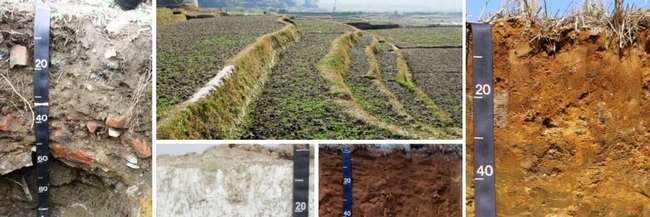Soils vary across a landscape according to soil-forming factors present in a particular location. To help those involved in land management and planning, the U.S. Department of Agriculture launched the National Soil Survey in 1899 to systematically map changes in soils across the country. Results were originally organized by county, and the mapping results published in county soil surveys.While the paper surveys were useful, one had to use several maps at different scales to locate the soil-map units for a site-specific location, then cross-reference the mapping unit to tables provided in the survey to obtain information on soil properties. Today, county soil survey information has been converted to a digital format known as the Web Soil Survey (WSS), which is accessible to the public via the Internet. The WSS provides the USDA's official soil survey data and information in a digital format. The tool was developed and is maintained by the USDA's Natural Resources Conservation Service (NRCS). Information in WSS is generated from the National Cooperative Soil Survey conducted by NRCS. The WSS can provide user-defined, site-specific information on soil properties that can be useful for agricultural producers, conservation professionals, scientists and others.
It is important to note that the accuracy of WSS is determined by the scale of the soil map. Most soil surveys are conducted at a scale of 1:20,000; reading soil data and maps should be performed at the same scale to ensure accuracy. A major advantage of WSS over the original paper surveys is that data can be extracted in digital formats, which can be imported directly into a geographic information system (GIS). The information can thenbe spatially aligned with other digital information, such as maps, satellite imagery, photo- graphs, and user-specified geographic coordinates obtained from global positioning systems, or GPS. This allows land-resource managers to efficiently aggregate information tailored to a specific purpose or location. For example, agricultural producers can overlay crop yield maps created with yield monitors with WSS information to determine how different soils may affect crop production
https://websoilsurvey.sc.egov.usda.gov/App/HomePage.htm
Web Soil Survey (WSS) provides soil data and information produced by the National Cooperative Soil Survey. It is operated by the USDA Natural Resources Conservation Service (NRCS) and provides access to the largest natural resource information system in the world. NRCS has soil maps and data available online for more than 95 percent of the nation's counties and anticipates having 100 percent in the near future. The site is updated and maintained online as the single authoritative source of soil survey information.
Soil surveys can be used for general farm, local, and wider area planning. Onsite investigation is needed in some cases, such as soil quality assessments and certain conservation and engineering applications. For more detailed information, contact your local USDA Service Center at the following link: USDA Service Center or your NRCS State Soil Scientist at the following link: NRCS State Soil Scientist.
